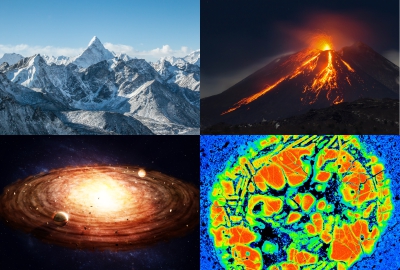Understanding the properties of Earth and Solar System materials, and their implications for planetary evolution, is a long-standing goal of the geosciences. At U of T, we combine cutting-edge analytical techniques with field studies, high temperature experiments, and geochemical models to illuminate the relationships between micro- and macro-scale processes. Our faculty forefronts in trying to solve important questions to advance our understanding the origin of our planet:

- What is the structure of silicate magmas and glasses?
- What are the carbon fluxes associated with mountain building?
- How do large igneous provinces evolve through time and what is their role in Earth's evolution?
- What are the timescales of magma transport beneath volcanoes?
- How are economically important trace elements held within geological materials?
- What are the underlying thermodynamic and kinetic controls on metamorphic processes?
- What are the stages and conditions of planetary formation?
- What controls element and isotopic fractionation between minerals, melts, and fluids?
| Faculty | Areas of Interest |
|---|---|
| Melissa Anderson | economic geology, metallogeny, marine science |
| Neil Bennett | experimental petrology, element and isotope fractionation, planetary differentiation |
| Xu Chu | metamorphism and magmatism, experimental petrology, geochemistry |
| Dan Gregory | hydrothermal ore systems |
| Mike Hamilton | geochronology |
| Corliss Sio | isotope geochemistry, experimental petrology |
| Kim Tait | meteoritics, mineralogy, crystallography, microstructural characterization, atom probe tomography |


